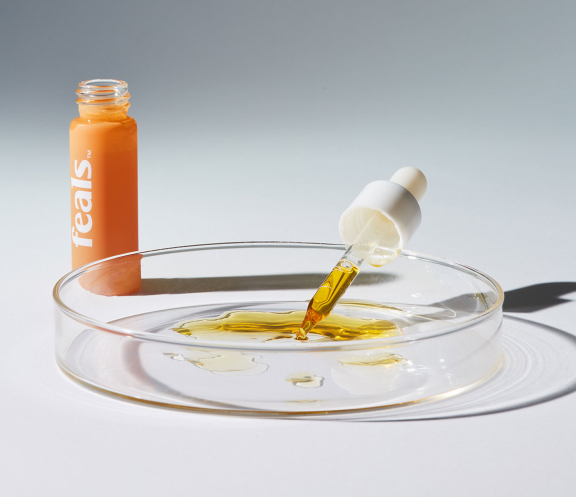From cannabidiol (CBD) to tetrahydrocannabivarin (THCV) to cannabinol (CBN), there are more than 100 cannabinoids found in cannabis and hemp plants. Whether you’re taking edibles, oils, or tinctures, these naturally-occurring compounds are responsible for the wide range of effects you experience.
Our cannabinoids 101 guide includes everything you need to know about cannabinoids, including what they are and how they work, the endocannabinoid system, types of cannabinoids, and a list of the most popular cannabinoids around.
Cannabinoids 101: Your Guide to Cannabinoids and The Endocannabinoid System
In this article, we’ll break down:
-
What cannabinoids are and how they interact with the endocannabinoid system
-
Types of cannabinoids (endocannabinoids, phytocannabinoids, and synthetic cannabinoids)
-
Some of the most common cannabinoids and their effects
What Are Cannabinoids and How Do They Work?
Cannabinoids are compounds found in cannabis and hemp plants. When consumed, cannabinoids interact with something called the endocannabinoid system—a cell-signaling system of receptors that plays an important role in the regulation of various processes and functions in the body.
Currently, researchers believe the endocannabinoid system helps regulate the following processes in the body:
-
Memory
-
Metabolism
-
Appetite
-
Reproduction and fertility
This system performs a variety of tasks at different locations in the body but always with the same objective—homeostasis, or balance.
The endocannabinoid system is comprised of two receptor types: the endocannabinoid type I and type II (CB1 and CB2) receptors which are located throughout your body, including the nerve cells in your brain and spinal cord, gastrointestinal tract, skeletal muscles, vascular system, and skin.
Types of Cannabinoids
There are actually three different types of cannabinoids—the ones our bodies produce on their own, the ones found in cannabis plants, and man-made cannabinoids.
-
Endocannabinoids: It turns out that our bodies actually produce their own cannabinoids, called endocannabinoids or endogenous cannabinoids, that activate receptors in the endocannabinoid system to keep internal functions running smoothly. So far, researchers have identified two main endocannabinoids, anandamide (AEA) and 2-arachidonoylglycerol (2-AG).
-
Phytocannabinoids: Phytocannabinoids, most commonly referred to as cannabinoids, are found in cannabis and hemp plants.
-
Synthetic cannabinoids: Synthetic cannabinoids are bio-identical, lab-made versions of the cannabinoids you find in cannabis plants formulated in a lab.

Most Popular Cannabinoids To Know
Cannabinoids are classified as either major or minor cannabinoids; major just means the cannabinoid is found in larger amounts in the plant, and minor means the cannabinoid is less abundant. Major cannabinoids include CBD and tetrahydrocannabinol (THC) while minor cannabinoids include THCV, cannabichromene (CBC), CBN, and cannabigerol (CBG), among others.
-
CBD: CBD is the second most common cannabinoid and is most popular for its potential to promote a normal inflammatory response, ease common anxiety, and help with sleeping troubles. CBD doesn’t bind well to CB1 receptors, but it can weakly activate CB2 receptors in addition to interacting with other receptors such as 5-HT1A, TRPV1, and PPARs.
-
THCV: While less known and considered a rare cannabinoid, THCV is one of the latest cannabinoids to hit the market. Scientific and clinical research surrounding THCV is in its preliminary stages, so there are no definitive answers to how THCV works and its potential benefits. Based on animal studies, experts currently think THCV may block the CB1 receptor, which is well known for stimulating appetite, so one potential use for THCV may be to reduce appetite.
THCV is currently being researched in a number of studies and clinical trials for its potential to be used to manage obesity and diabetes. Anecdotal evidence suggests THCV may also boost energy and concentration, though more research is needed.
-
CBC: CBCis the third most common cannabinoid. It exhibits many similar beneficial characteristics of THC and CBD. CBC doesn’t bind well to CB1 and CB2, but it can bind with TRPV1 and TRPA1 which are receptors linked to the perception of pain. Because of this interaction, CBC may help reduce everyday aches and pains.
-
CBN: While more scientific and clinical research surrounding CBN is needed, CBN is believed to bind to both CB1 and CB2 receptors. Anecdotal evidence and preliminary research suggest CBN may help your body manage inflammation in addition to promoting restful sleep.
-
THC: THC is the most common cannabinoid and is well known for producing intoxicating or psychoactive effects. THC’s high-inducing effects are produced through its action on the brain’s CB1 receptor.
However, it also interacts weakly with CB2 receptors in the endocannabinoid system. Because of this, THC may ease mild aches and pain, reduce sleeping troubles, stimulate appetite, and reduce nausea and vomiting.
-
CBG: CBG is believed to bind to both CB1 and CB2 receptors and may strengthen the function of anandamide (the “bliss chemical”), a neurotransmitter that plays an important role in enhancing mood and pleasure and regulating sleep. Anandamide signaling is associated with a positive mood and a sense of calm.
Feals: Delivering Thoughtfully Made Cannabinoid Products
At Feals, we’re dedicated to providing you with a better way to feel better. Our full-spectrumCBD oil and CBD mints and THCV/CBC focus melts are made with only the purest ingredients and are designed to help you find balance and feel at your best.
If you still have questions about cannabinoids beyond our cannabinoids 101 guide—or just need a bit of guidance on your wellness journey—our customer service team would love to help. Just give them a ring.
If you still have questions after reading our cannabinoid 101 guide or would like to learn more about what Feals can do for you, call our CBD hotline at 844-311-9090 or check out our products today.
These statements have not been evaluated by the Food and Drug Administration. This product is not intended to diagnose, treat, cure, or prevent any disease. This article is for informational purposes only. It is not, nor is it intended to be, a substitute for professional medical advice, diagnosis, or treatment and should never be relied upon for specific medical advice.
